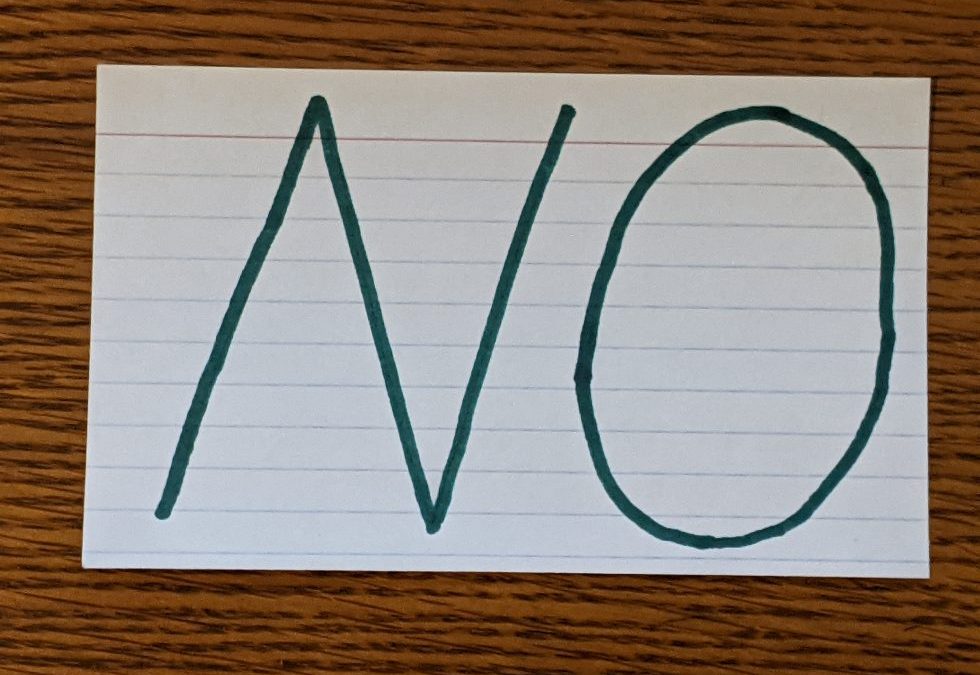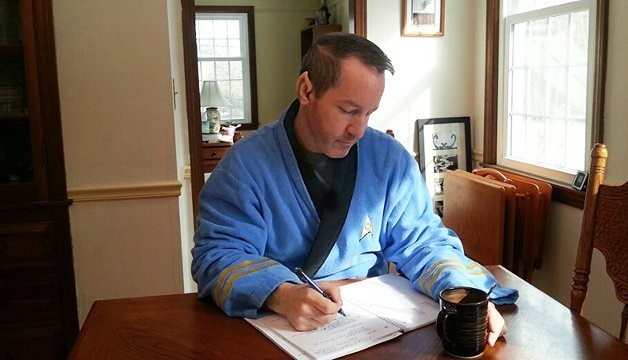
by ITK Administrator | Feb 22, 2021 | Uncategorized |
This week’s post is by Allison Khaw. Photo by Mika Baumeister on Unsplash.
I was sitting at my desk recently, participating in a virtual work meeting, when I sneezed.
I was already muted, so the meeting continued without pause, but this got me thinking. As a side effect of our current behavioral norms, we are effectively subduing those idiosyncrasies that make us human. Returning my gaze to the computer screen, I mused to myself: Should we be muting our sneezes?
I still chuckle at the inexplicable absurdity of this question—muting our sneezes, who would have thought!—but I also ask it with a genuine yearning to understand the answer. And the true question, as you may have guessed, extends beyond sneezing. Before COVID-19 upended our work culture, we lived in a time where in-person meetings were more common than hybrid or virtual ones. The paradigm has shifted so dramatically that the opposite is true today. Virtual meetings are prevalent out of necessity, and we’ve become more adept at handling them than ever before.
When we participate in these meetings, we possess the incredible ability to mute our voices or disappear from view at the click of a button. Our current circumstances pose seeming contradictions: our presence can be invisible; our sneezes can be silent! Ultimately, we now have the freedom to choose when to be seen and heard.
However, as the phrase goes, freedom always comes with a cost. We’re trying to appear—and be—professional, but what are we losing in return?
Of course, muting is important in many situations, whether you’re minimizing your background noise in a large meeting or finishing your lunch without wanting to moderate the crunch level of your chips. Thus, we should do our best to maintain this self-awareness in our virtual meetings while finding ways to avoid muting our own humanity in the process.
And how do we do that? Well, we can take a meaningful first step by performing small experiments, true to the spirit of the Innovation Toolkit. For instance, try showing your video while speaking for a presentation, using your authentic home office as your meeting background, or eating your lunch with your microphone off but your camera on. Another idea is to try an “active listening” exercise: pair up with a coworker, listen to them describe their day for two uninterrupted minutes before you paraphrase what you heard them say, and then swap roles. After doing this exercise in a recent “Yes, And” Innovation Toolkit workshop, I felt rejuvenated by the chance to listen to someone else and be equally heard. Whatever you decide to try, stretch outside of your comfort zone and then reflect on how it went.
As we look towards the future, we need to remember that no one expects us to be perfect, not even in a virtual setting. We need to remember that simple visual cues such as nodding, smiling, or laughing can be invaluable in bringing us closer together despite our physical distance. What’s more, we need to have conversations about these topics, now and often. In fact, if we don’t, we may find that the sounds of our sneezes are not all that we’ll lose in the end.

by dbward | Feb 15, 2021 | Innovation Coaching |
It’s only two letters, but “no” can be a hard word to say.
There are lots of reasons it’s hard to say no, particularly for members of Team Toolkit. We’re an enthusiastic, positive, and curious bunch. We love trying new things and are committed to building a culture of generosity. We love helping people, we sincerely enjoy the work, and we explicitly bring a “Yes, And…” mentality to all our activities. So when a new request comes in, when someone reaches out and asks for our time and attention, our natural inclination is to say yes.
But sometimes, yes is the wrong answer. Sometimes we need to say no. And that’s hard.
Difficult or not, it’s super important to turn down some requests. A discipline of saying no helps us stay focused on the most important, impactful work, and do it in a sustainable way. It prevents us from getting burned out, overcommitted, or spread too thin, from doing work that is not a good fit, or from being distracted from our actual mission. But even though it’s good and important to turn down some opportunities, it’s still not easy to do.
Why is it so challenging? Well, sometimes we feel guilty about saying no, like we’re letting people down by not accepting the invitation. Other times we feel scared, because we’re not sure how the other person will respond or how the decision might impact our career. Saying no can feel like a contradiction to our fundamentally positive character. And of course there’s also FOMO – the fear of missing out, particularly when the thing we’re saying no to sounds like it would be a positive opportunity. It’s tough to say no when a big part of you wants to say yes.
Here are a few techniques that help me in this area:
Do it quickly. Don’t leave the other person hanging for too long – that’s not nice to them, and the longer we delay, the more pressure we feel to say yes. Plus, delaying a decision just eats up the time we’re trying to protect by saying no in the first place.
Set boundaries in advance. Create a little rubric to help filter incoming requests. Just as a plumber should turn down a customer’s request to do electrical work, we decline invitations that don’t require our tools and specialties. For example, if someone asks us to simply run a meeting, we say no. That’s not the kind of facilitation we do.
Don’t offer an explanation. “No” is a complete sentence, and it is perfectly legitimate to say, “Sorry, I can’t do that.” Other variations might include “I’m not available” or “That’s not a good fit.” Resist the urge to give a detailed explanation of why you can’t do it, why it’s not a good fit, or what higher-priority activities you’re already committed to. You’re making a decision, not starting a debate.
Do offer an alternative. Depending on the nature of the request we’re declining, we may be able to suggest a different option. Something like “I’m not available tomorrow but I’m free next Thursday.” Or “I’m not available but maybe Rachel is.” Of course, you can still say no even if you don’t have an alternative, but it helps both parties if you can offer a Plan B.
Don’t negotiate with yourself. Avoid saying stuff like “I can’t do it tomorrow unless you really need it ok maybe I can, just hold on while I rearrange my calendar…” Before you turn your no into a yes, give the other person a chance to accept the first answer. And if they do come back and ask again, you can still hold on to your first “no.” You knew what you were doing when you said it the first time.
One final observation: Saying no takes practice. Just like all hard things, we get better at it the more we do it. So you’re invited start with just one “no” this week and see what happens. We’d love to hear how it goes!

by dbward | Feb 1, 2021 | Misc Awesomeness
Can I tell you a secret? For every post I publish here, there’s at least half a dozen you’ll never see.
I’m not just talking false starts, where I have a stub of an idea that ends up not going anywhere. I’m talking about whole posts on topics that don’t quite land, don’t cohere, don’t resolve into anything worth sharing. Even though I am a pretty experience writer, the truth is I write a TON of worthless stuff that (appropriately!) never sees the light of day.
And it’s not just crummy first drafts. I actually spend a fair amount of time editing, revising, and reworking material, in the hopes of creating something useful… before quietly setting it aside and starting over with a blank page.
The thing is, I can never tell whether a post is going to be worth sharing until I write it. An idea might look promising at the start, but only reveal its true value (or lack thereof) once it’s gone through a few versions. For that matter, the idea itself might not be terrible, but my ability to express the idea comes up short. That probably means I don’t really understand the idea very well. Or maybe it means I need to more sleep, more coffee, or less screen time.
The funny thing is, this willingness to create bad work and then dispose of it seems to be the secret to doing things well. Not just in terms of blog posts, but all sorts of other endeavors. When I give myself permission to create badly – and permission to toss away the results of that work – I find myself in a more creative and productive mindscape. I am free to play, to noodle around, to explore and experiment, because the pressure is off. If the thing I’ve created isn’t very good, nobody ever has to know. I can just delete it and try again.
And yes, 6 times out of 7 the result is… pretty bad. Which is precisely as expected, and that’s ok. But every once in a while a flower grows in that pile of manure. Not in spite of the bad drafts – because of them. I’m sharing this story as an invitation to give yourself permission to play, to make bad art, to delete your disposable drafts… and to keep going. You may also want to get a Star Trek bathrobe, but that’s not required.



